Data Grouping Method for the Purpose of Forecasting the Mechanical Strength of Plastic Soils
Abstract
1. Introduction
2. Materials and Methods
2.1. The Characteristic of the Researched Soils
2.2. Data Grouping Method
2.2.1. The preliminary Grouping Tests
2.2.2. The Procedure of Soil Data Grouping
3. Results and Discussion
3.1. Model Variables
3.2. Results of the Preliminary Grouping Tests
3.3. Selection of Parameters for Grouping
3.4. Characterization of Subsets after Data Grouping
3.5. Regression Equations
3.6. Methodological Limitations
4. Conclusions
Author Contributions
Funding
Conflicts of Interest
Appendix A
| Site Designation | ρs | pHKCl | Zpr | CaCO3 | PL | LL | Content of Fraction | Soil Texture Acc. USDA [29] | ||
|---|---|---|---|---|---|---|---|---|---|---|
| 0.05–0.002 | <0.002 | <0.02 | ||||||||
| (g·cm–3) | (–) | (%) | (% w/w) | (%) | ||||||
| Cz | 2.49–2.79 | 6.36–6.91 | 0.33–1.41 | – | 14.4–23.7 | 23.3–49.0 | 24.7–40.9 | 11.4–26.8 | 36–60 | SL, SCL, L, |
| De | 2.46–2.67 | 5.55–7.50 | 0.38–1.83 | – | 15.3–26.6 | 19.8–50.5 | 33.6–56.6 | 9.9–34.7 | 25–68 | SiL, SL, CL, L |
| Ku | 2.55–2.73 | 6.33–7.06 | 0.21–1.06 | 0.00–0.13 | 11.6–26.7 | 12.7–46.2 | 15.7–37.1 | 5.9–31.3 | 20–59 | SL, SCL, CL, L |
| Sł | 2.46–2.54 | 5.46–5.93 | 0.83–1.52 | – | 16.5–17.9 | 20.4–23.0 | 36.0–40.3 | 7.8–9.8 | 23–27 | L, SL |
| Lu | 2.55–2.71 | 7.53–7.85 | 0.32–1.74 | 0.97–11.46 | 13.3–19.4 | 16.3–30.9 | 28.0–41.8 | 11.4–20.5 | 31–49 | SL, L |
| No | 2.56–2.65 | 4.97–5.80 | 0.25–1.13 | – | 16.7–21.6 | 23.0–37.8 | 34.3–38.4 | 9.8–24.5 | 24–52 | SL, L |
| NP | 2.45–2.47 | 6.21–6.34 | 1.09–3.09 | 0.78–2.86 | 20.3–23.7 | 29.5–31.3 | 50.2–56.6 | 8.9–14.5 | 33–38 | SiL |
| Ob1 | 2.40–2.67 | 6.52–7.18 | 0.75–4.17 | 0.00–22.18 | 24.9–31.4 | 36.1–73.0 | 45.7–71.6 | 16.9–41.8 | 62–91 | SCL, SiL, SiC, L |
| Ob2 | 2.47–2.71 | 6.27–6.78 | 0.54–2.21 | 0.00–0.52 | 12.8–19.0 | 16.2–32.0 | 17.5–34.5 | 9.8–15.7 | 22–40 | SL, L |
| Os | 2.52–2.74 | 4.67–5.65 | 0.39–1.06 | – | 14.1–23.1 | 17.0–35.1 | 22.1–40.4 | 8.8–22.5 | 31–50 | SL, L |
| Re | 2.39–2.44 | 6.43–6.50 | 2.91–4.03 | 0.55–5.18 | 22.0–25.9 | 31.8–37.0 | 44.7–50.0 | 11.8–13.9 | 31–35 | L |
| Sk | 2.50–2.70 | 5.48–6.99 | 0.60–1.92 | 0.00–0.09 | 17.9–40.4 | 26.4–99.3 | 24.3–66.5 | 11.7–40.8 | 35–90 | SCL, SL, SiL, L, CL, SiCL |
| St | 2.42–2.70 | 6.70–7.34 | 0.52–4.12 | 0.00–0.43 | 15.1–23.9 | 22.7–31.5 | 27.4–36.5 | 12.8–19.6 | 29–42 | SL, L |
| Site Designation | ρB | ρdB | nB | WPPb | Sz | ZD | SD | RCD | WPPz | S |
|---|---|---|---|---|---|---|---|---|---|---|
| g∙cm−3 | g∙cm−3 | % | % | mm | m2∙100g−1 | m2∙cm−3 | g∙100g−1 | % | – | |
| Cz | 2.45–2.53 | 1.39–1.50 | 41.5–44.7 | 17.5–27.0 | 0.011–0.033 | 60.0–125.0 | 158.9–331.0 | 0.76–2.28 | 20.1–30.1 | 0.69–2.79 |
| De | 2.41–2.54 | 1.34–1.50 | 41.2–46.4 | 19.4–28.0 | 0.007–0.039 | 35.4–162.2 | 93.7–429.8 | 0.41–2.13 | 19.7–36.5 | 0.58–3.27 |
| Ku | 2.44–2.58 | 1.38–1.57 | 39.6–45.0 | 13.9–29.8 | 0.008–0.070 | 32.5–140.2 | 86.3–371.5 | 0.72–4.22 | 13.0–27.3 | 0.38–2.94 |
| Sł | 2.53–2.55 | 1.49–1.52 | 40.7–41.4 | 17.6–19.82 | 0.034–0.046 | 39.9–48.9 | 105.9–129.5 | 0.58–0.81 | 19.0–22.2 | 1.84–3.04 |
| Lu | 2.49–2.54 | 1.45–1.51 | 41.2–42.9 | 18.0–23.0 | 0.020–0.037 | 53.2–95.6 | 141.0–253.3 | 0.60–2.30 | 20.2–26.2 | 0.59–3.35 |
| No | 2.47–2.52 | 1.41–1.49 | 41.6–43.9 | 20.0–25.8 | 0.014–0.032 | 47.7–111.1 | 126.3–294.5 | 0.92–3.36 | 18.84–26.1 | 0.41–2.09 |
| NP | 2.48–2.50 | 1.42–1.45 | 42.5–43.2 | 23.5–25.6 | 0.017–0.021 | 48.4–71.1 | 128.2–188.4 | 0.36–0.92 | 26.6–30.0 | 1.63–4.83 |
| Ob1 | 2.37–2.44 | 1.27–1.37 | 44.9–47.8 | 29.4–36.1 | 0.004–0.010 | 83.9–187.7 | 222.5–497.5 | 0.46–1.49 | 31.6–40.8 | 0.84–5.71 |
| Ob2 | 2.51–2.57 | 1.48–1.55 | 40.2–42.4 | 15.1–19.0 | 0.028–0.056 | 48.6–73.8 | 128.8–195.5 | 0.54–1.37 | 13.3–27.3 | 1.66–4.42 |
| Os | 2.49–2.55 | 1.44–1.52 | 40.7–43.1 | 16.5–23.6 | 0.018–0.045 | 44.8–103.5 | 118.8–274.3 | 0.74–2.08 | 17.6–24.8 | 0.79–2.58 |
| Re | 2.49–2.50 | 1.44–1.46 | 42.3–42.8 | 23.7–24.3 | 0.019–0.021 | 59.1–66.7 | 156.7–176.9 | 0.31–0.43 | 27.8–32.6 | 4.93–6.40 |
| Sk | 2.36–2.53 | 1.25–1.50 | 41.4–48.2 | 16.7–38.6 | 0.003–0.036 | 59.7–174.0 | 158.2–461.1 | 0.67–2.34 | 22.7–45.3 | 0.69–3.79 |
| St | 2.50–2.54 | 1.45–1.51 | 41.1–42.6 | 18.3–22.8 | 0.020–0.036 | 60.1–90.1 | 159.3–238.8 | 0.32–1.58 | 17.9–29.5 | 1.00–8.58 |
- Krumbein, W.C. Size frequency distribution of sediments. J. Sediment. Petrol. 1934, 4, pp. 65–77.
- Krumbein, W.C. Application of logarithmic moments of size frequency distribution of sediments. J. Sediment. Petrol. 1936, 6 s. 35–47.
- Folk, R.L.; Ward W.C. Brazos River Bar: A study in the significance of grain size parameters. J. Sediment. Petrol. 1957, 27, pp. 3–26.
- RDC—the quantity of readily dispersible clay (g/100g of soil),
- CL—clay content %; (fraction <0.002 mm),
- OM—organic matter content % (or g/100g of soil).
- S—stability index,
- OM—organic matter content %,
- Zi—clay content %,
- Zp—silt content %.
References
- Van den Akker, J.J.H.; Arvidsson, J.; Horn, R. Introduction to the special issue on experiences with the impact and prevention of subsoil compaction in the European Union. Soil Till. Res. 2003, 73, 1–8. [Google Scholar] [CrossRef]
- Hadas, A.; Shmulevich, O.; Hadas, O.; Wolf, D. Forage wheat yields as affected by compaction and convention vs. wide frame tractor traffic patterns. Trans. ASAE 1990, 33, 79–85. [Google Scholar] [CrossRef]
- Oskoui, K.E.; Voorheers, W.B. Economical consequences of soil compaction. Trans. ASAE 1991, 34, 2317–2323. [Google Scholar] [CrossRef]
- Alakukku, L. Persistence of soil compaction due to high loads traffic. II Long-term effect on the properties of fine–textured and organic soils. Soil Till. Res 1996, 37, 223–238. [Google Scholar] [CrossRef]
- Krasowicz, S.; Oleszek, W.; Horabik, J.; Dębicki, R.; Jankowiak, J.; Stuczyński, T.; Jadczyszyn, J. Rational management of the soil environment in Poland. Pol. J. Agron 2011, 7, 43–58. (In Polish) [Google Scholar]
- Olesen, J.E.; Munkholm, L.J. Subsoil loosening in a crop rotation for organic farming eliminated plough pan with mixed effects on crop yield. Soil Till. Res. 2007, 94, 376–385. [Google Scholar] [CrossRef]
- Mosaddeghi, M.R.; Hemmat, A.; Hajabbasi, M.A.; Alexandrou, A. Pre-compression stress and its relation with the physical and mechanical properties of a structurally unstable soil in central Iran. Soil Till. Res. 2003, 70, 53–64. [Google Scholar] [CrossRef]
- Dexter, A.R.; Czyż, E.A.; Gate, O.P. A method for prediction of soil penetration resistance. Soil Till. Res. 2007, 93, 412–419. [Google Scholar] [CrossRef]
- Arvidsson, J.; Keller, T. Comparing penetrometer and shear vane measurements with measured and predicted mouldboard plough draught in a range of Swedish soils. Soil Till. Res. 2011, 111, 219–223. [Google Scholar] [CrossRef]
- Motavalli, P.P.; Anderson, S.H.; Pengthamkeerati, P.; Gantzer, C.J. Use of soil cone penetrometers to detect the effects of compaction and organic amendments in claypan soils. Soil Till. Res. 2003, 74, 103–114. [Google Scholar] [CrossRef]
- Horn, R.; Fleige, H. A method for assesing the impact of load on mechanical stability and on physical properties of soils. Soil Till. Res. 2003, 73, 89–99. [Google Scholar] [CrossRef]
- Busscher, W.J.; Bauer, P.J.; Camp, C.R.; Sojka, R.E. Correction of cone index for soil water content differences in a coastal plain soil. Soil Till. Res. 1997, 43, 205–217. [Google Scholar] [CrossRef]
- Vaz, C.M.P.; Manieri, J.M.; de Maria, I.C.; Tuller, M. Modeling and correction of soil penetration resistance for varying soil water content. Geoderma 2011, 166, 92–101. [Google Scholar] [CrossRef]
- Vaz, C.M.P.; Manieri, J.M.; de Maria, I.C.; Tuller, M.; van Genuchten, M.T. Scaling the Dependency of Soil Penetration Resistance on Water Content and Bulk Density of Different Soils. Soil Sci. Soc. Am. J. 2013, 77, 1488–1495. [Google Scholar] [CrossRef]
- Lebert, M.; Horn, R. A method to predict the mechanical strenght of agricultural soils. Soil Till. Res. 1991, 19, 275–286. [Google Scholar] [CrossRef]
- Fritton, D.D. Evaluation of pedotransfer and measurement approaches to avoid soil compaction. Soil Till. Res. 2008, 99, 268–278. [Google Scholar] [CrossRef]
- Finke, R.; Hartwich, R.; Dudal, R.; Ibanez, J.; Jamagne, M.; King, D.; Montanarella, L.; Yassoglou, N. Georeferenced Soil Database for Europe. Manual of Procedures. Version 1.1 by European Soil Bureu Scientific Committee; EUR 18092 EN ©European Communities, Office for Official Publications of the European Communities: Luxembourg, 2001. [Google Scholar]
- Lipiński, J. Quantified system of description of the soil’s graining. Wiadomości Instytutu Melioracji i Użytków Zielonych 1996, 19, 91–100. (In Polish) [Google Scholar]
- Constantini, A. Relationships between cone penetration resistance, bulk density, and moisture content in uncultivated, repacted, and cultivated hardsetting and non-hardsetting soils from the coastal lowlands of South-East Queensland. N. Zealand J. For. Sci. 1996, 26, 395–412. [Google Scholar]
- Alakukku, L. Experience with soil compaction. In Experiences with the impact and prevention of subsoil compaction in the European Community. In Proceedings of the Concerted Action “Experiences with the impact of subsoil compaction on soil, crop and environment and ways to prevent subsoil compaction”, Wageningen, The Netherlands, 28–30 May 1998. [Google Scholar]
- ISO. Soil Quality–Determination of the Potential Cation Exchange Capacity and Exchangeable Cations Using Barium Chloride Solution Buffered at pH. ISO 13536. 1995. [Google Scholar]
- Brogowski, Z. An attempt of calculation of same physical properties of soils on the basis of granulometric analysis. Roczniki Gleboznawcze 1990, 41, 17–28. (In Polish) [Google Scholar]
- Trzecki, S. Determination of water capacity of soils on the basis of their mechanical composition. Rocz. Gleboz. (suppl.) 1974, 25, 33–44. [Google Scholar]
- Prusinkiewicz, Z.; Proszek, P. “Texture”–the program of computer interpretation of results of soil particle size analysis. Rocz. Glebozn. 1990, 41, 5–16. (In Polish) [Google Scholar]
- Czyż, E.A. Quantitative and spatial characteristic of polish agricultural soils to destruction. Inżynieria Rol. 2005, 3, 15–22. (In Polish) [Google Scholar]
- Schroth, G. Measuring the Role of Soil Organic Matter in Aggregate Stability. In Trees, Crops and Soil Fertility Concepts and Research Methods; Schroth, G., Sinclair, F.L., Eds.; CABI Publishing: Wallingford, UK, 2003; pp. 204–207. ISBN 0-85199-593-4. [Google Scholar]
- Dexter, A.R.; Richard, G.; Arrouays, D.; Czyż, E.A.; Jolivet, E.A.; Duval, O. Complexed organic matter controls soil physical properties. Geoderma 2008, 144, 620–627. [Google Scholar] [CrossRef]
- Soane, B.D. The Role of Organic Matter in Soil Compactibility: A Review of Some Practical Aspects. Soil Till. Res. 1990, 16, 179–201. [Google Scholar] [CrossRef]
- Particle size distribution and textural classes of soils and mineral materials—classification of Polish Society of Soil Science 2008. Rocz. Glebozn. Soil Sci. Annu. 2009, 60, 5–16. (In Polish)
- Kutner, M.H.; Nachtsheim, C.; Neter, J.; Li, W. Applied Linear Statistical Models; McGraw-Hill/Irwin: New York, NY, USA, 2005; ISBN 0-07-238688-6. [Google Scholar]
- Pukos, A.; Walczak, R. Methodical aspects of the constuction of soil penetrometers as applied to the evaluation of soil compaction. Zesz. Probl. Postępów Nauk Rol. 1990, 308, 149–159. [Google Scholar]
- Elaoud, A.; Hassen, H.B.; Salah, N.B.; Masmoudi, A.; Chehaibi, S. Modeling of soil penetration resistance using multiple linear regression (MLR). Arab. J. Geosci. 2017, 10, 442. [Google Scholar] [CrossRef]
- Gao, W.; Whalley, W.R.; Tian, Z.; Liu, J.; Ren, T. A simple model to predict soil penetrometer resistance as a function of density, drying and depth in the field. Soil Till. Res. 2016, 155, 190–198. [Google Scholar] [CrossRef]
- TIBCO Software Inc. Statistica (Data Analysis Software System), Version 13. 2017; (Available in: Statistica Help, Statistica Electronic Manual).
- Casanova, M.; Tapia, E.; Seguel, O.; Salazar, O. Direct measurement and prediction of bulk density on alluvial soils of central Chile. Chil. J. Agric. Res. 2016, 76, 105–113. [Google Scholar] [CrossRef]
- Al-Shammary, A.A.G.; Kouzani, A.Z.; Kaynak, A.; Khoo, S.Y.; Norton, M.; Gates, W. Soil bulk density estimation methods: A review. Pedosphere 2018, 28, 581–596. [Google Scholar] [CrossRef]
- Piccoli, I.; Schjønning, P.; Lamandé, M.; Zanini, F.; Morari, F. Coupling gas transport measurements and X-ray tomography scans for multiscale analysis in silty soils. Geoderma 2019, 338, 576–584. [Google Scholar] [CrossRef]
- Lucas, M.; Vetterlein, D.; Vogel, H.J.; Schlüter, S. Revealing pore connectivity across scales and resolutions with X-ray CT. Eur. J. Soil Sci. 2020. [Google Scholar] [CrossRef]
- Warzyński, H.; Sosnowska, A.; Harasimiuk, A. Effect of variable content of organic matter and carbonates on results of determination of granulometric composition by means of Casagrande’s areometric method in modification by Prószyński. Soil Sci. Annu. 2018, 69, 39–48. [Google Scholar] [CrossRef]
- Sutton, R.; Sposito, G. Molecular structure in soil humic substances: The new view. Environ. Sci. Technol. 2005, 39, 9009–9015. [Google Scholar] [CrossRef]
- Lehmann, J.; Solomon, D.; Kinyangi, J.; Dathe, L.; Wirick, S.; Jacobsen, C. Spatial complexity of soil organic matter forms at nanometre scales. Nat. Geosci. 2008, 1, 238–242. [Google Scholar] [CrossRef]
- Kleber, M.; Johnson, M.G. Advances in understanding the molecular structure of soil organic matter: Implications for interactions in the environment. Adv. Agron. 2010, 106, 77–142. [Google Scholar]
- Schmidt, M.W.I.; Torn, M.S.; Abiven, S.; Dittmar, T.; Guggenberger, G.; Janssens, I.A.; Kleber, M.; Kögel-Knabner, I.; Lehmann, J.; Manning, D.A.C.; et al. Persistence of soil organic matter as an ecosystem property. Nature 2011, 478, 49–56. [Google Scholar] [CrossRef]
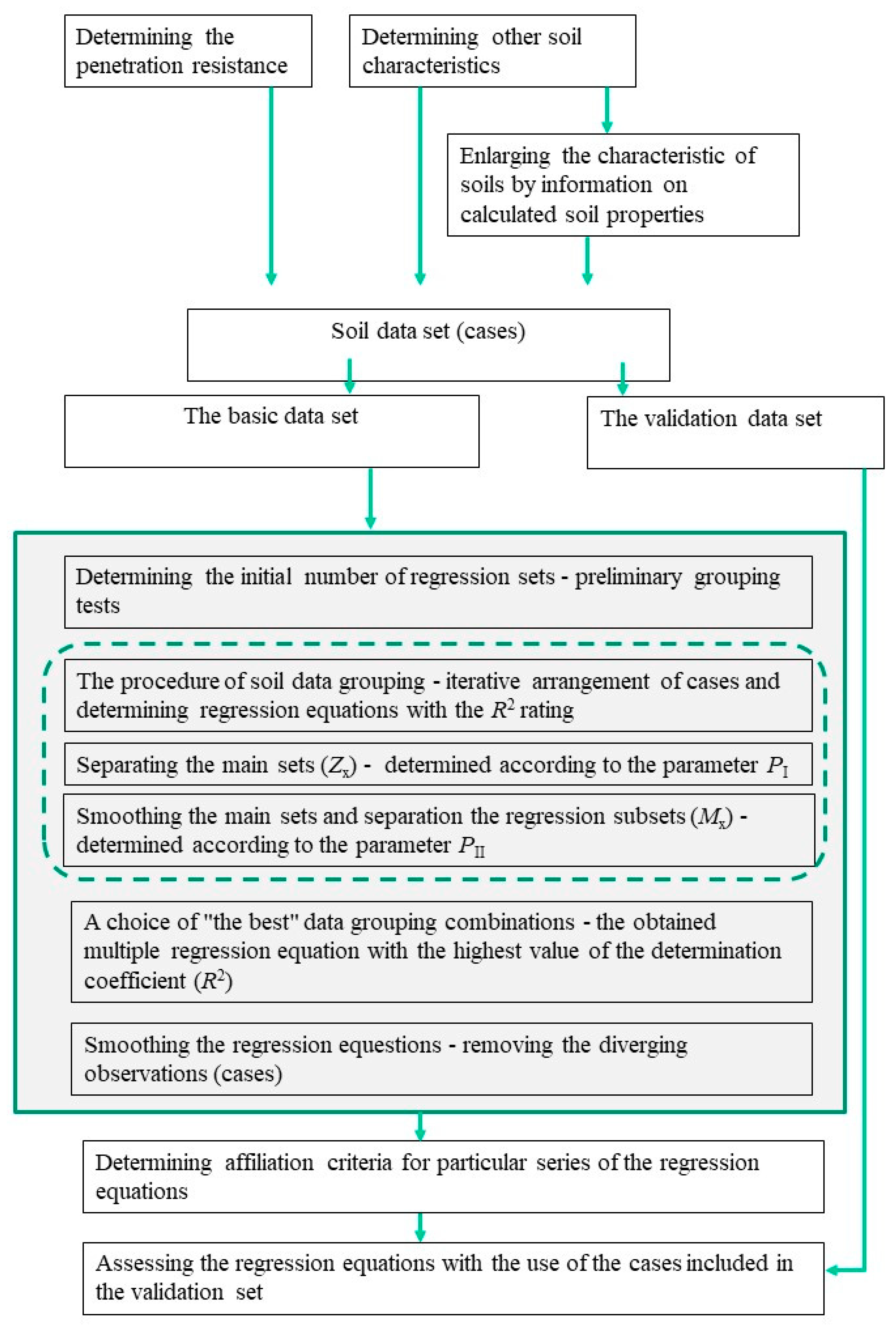
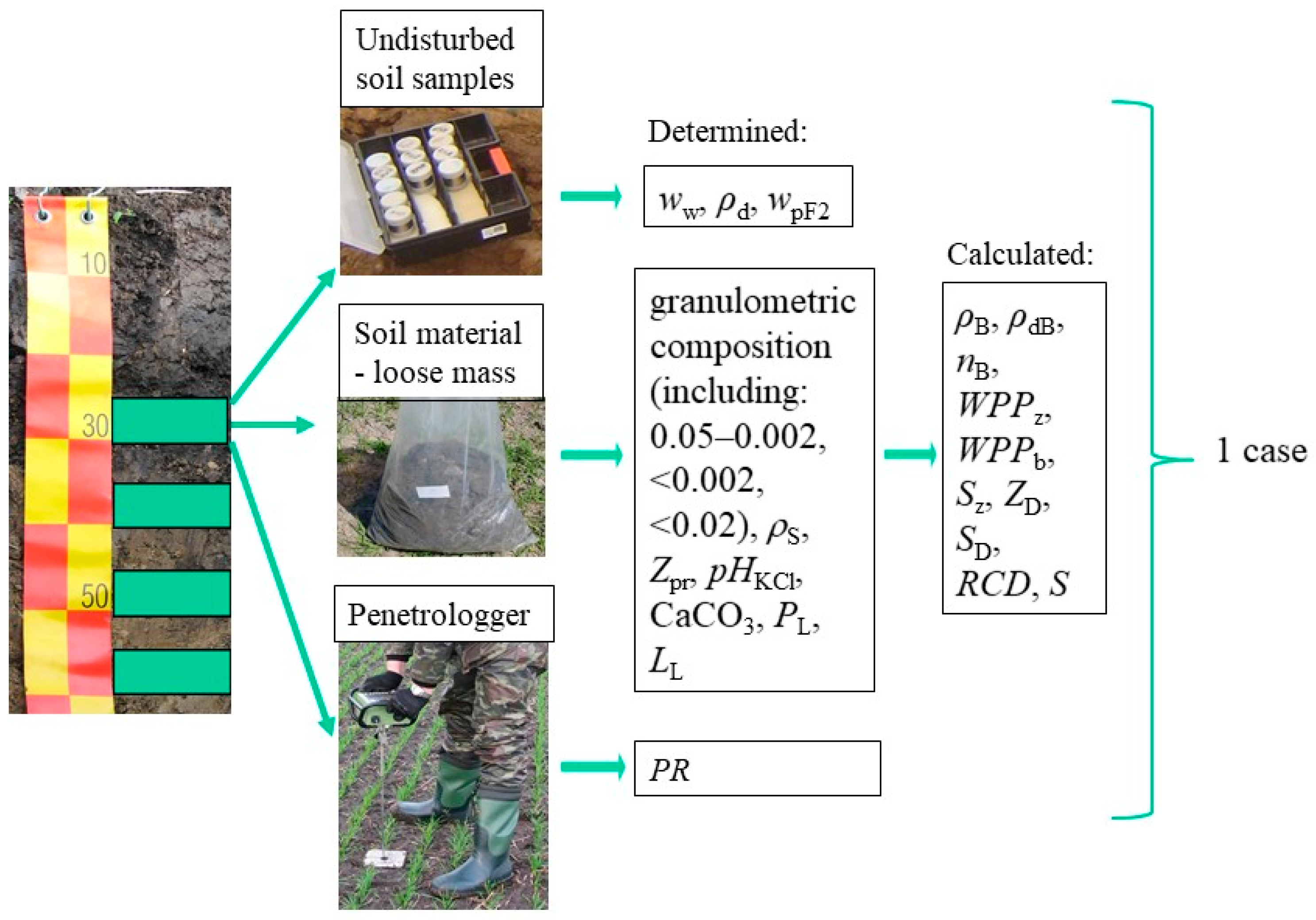
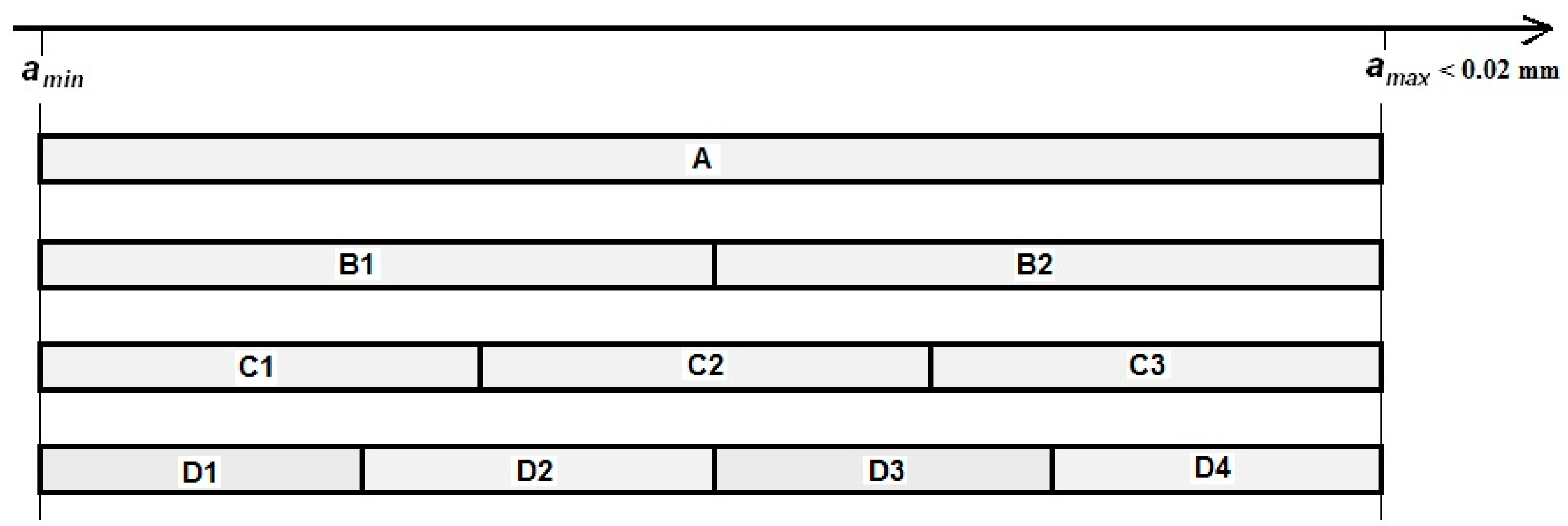
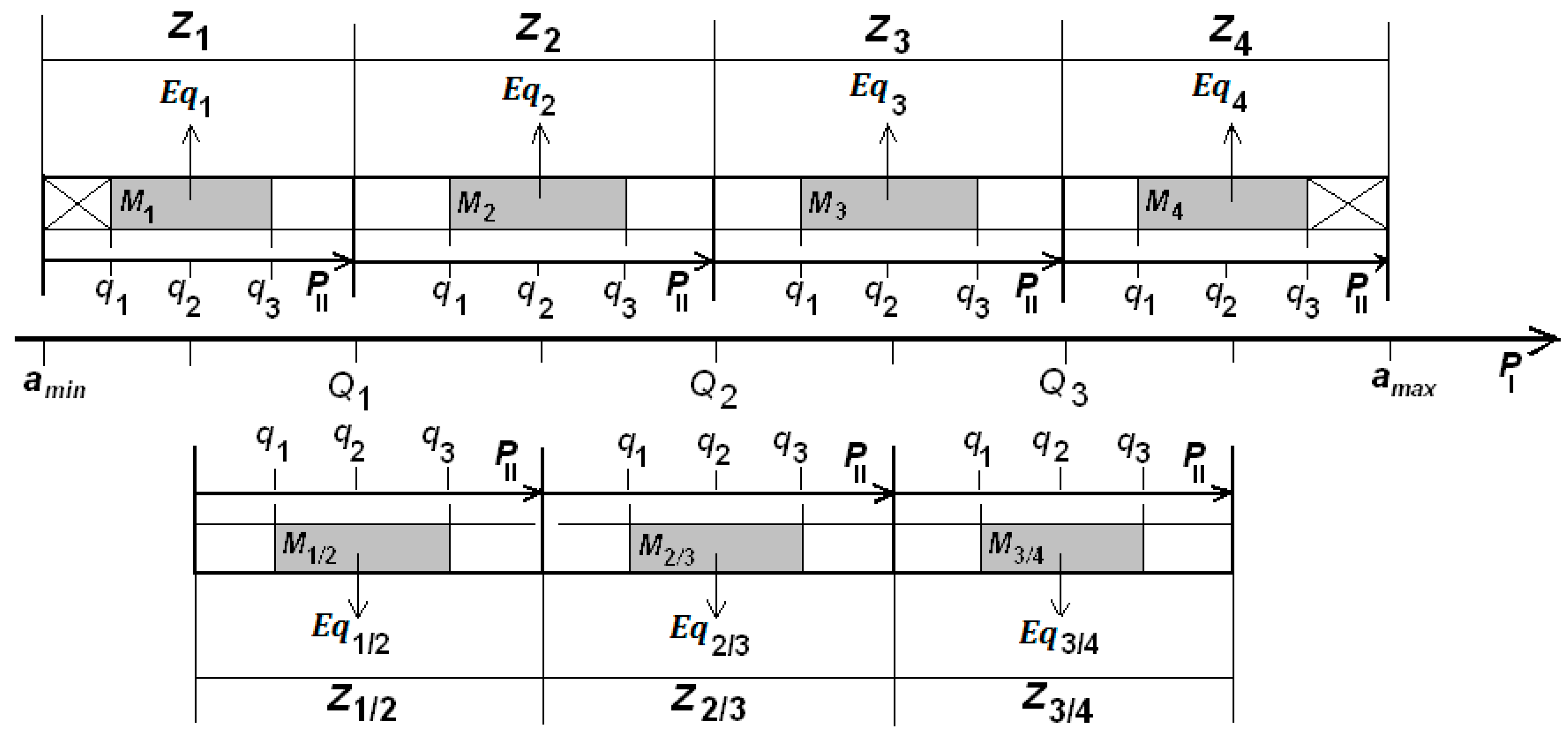
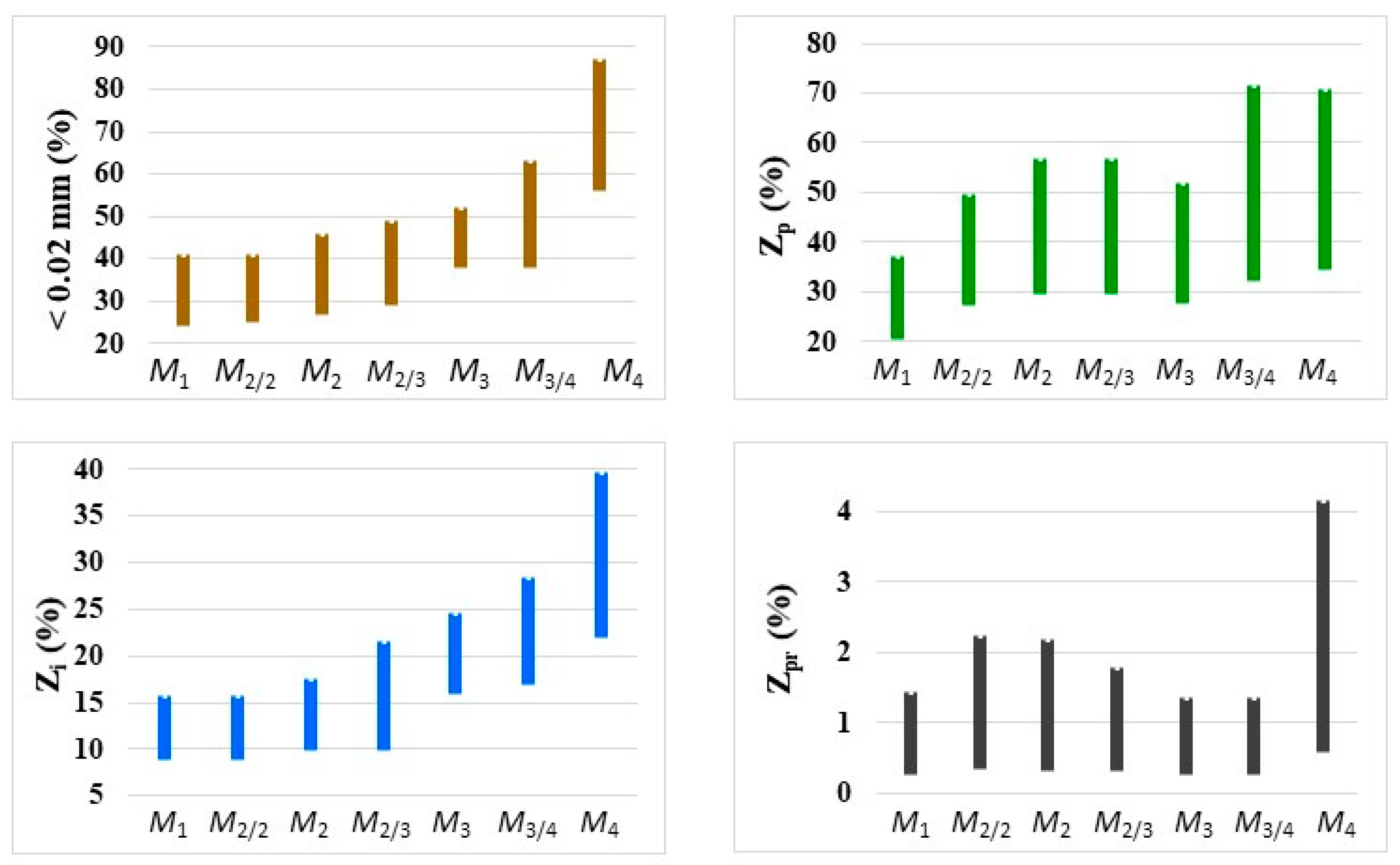

| Site Designation | Number of Soil Profiles | Number of Pits of the Basic Set | Number of Pits of the Validation Set | Field Located * | Soil Groups (acc. WRB-FAO) | Maximum Soil Tillage Depth ** |
|---|---|---|---|---|---|---|
| (cm) | ||||||
| CzBS | 4 | 8 | - | 52° 54’ 02”N; 14° 14’ 05”E | Cambisols | 18 |
| DeBS | 4 | 8 | - | 53° 15’ 20”N; 14° 58’ 04”E | Phaeozems | 25 |
| Ku | 4 | 8 | 3 | 53° 15’ 45”N; 15° 04’ 04”E | Luvisols | 25 |
| SłVS | 1 | 2 | 53° 16’ 57”N; 14° 57’ 01”E | Phaeozems | 22 | |
| LuBS | 4 | 8 | - | 52° 54’ 03”N; 14° 14’ 02”E | Cambisols | 18 |
| NoBS | 4 | 8 | - | 54° 04’ 40”N; 15° 15’ 48”E | Cambisols | 30 |
| NPVS | 1 | 2 | 53° 13’ 18”N; 15° 01’13”E | Phaeozems | 22 | |
| Ob1 | 4 | 8 | 3 | 53° 09’ 59”N; 14° 55’ 19”E | Phaeozems | 25 |
| Ob2BS | 4 | 8 | - | 53° 09’ 16”N; 14° 55’ 30”E | Phaeozems | 30 |
| Os | 4 | 8 | 3 | 53° 24’ 49”N; 14° 27’ 49”E | Cambisols | 15 |
| ReVS | 1 | 2 | 53° 14’ 17”N; 14° 57’ 32”E | Phaeozems | 18 | |
| Sk | 4 | 8 | 4 | 53° 26’ 27”N; 14° 25’ 48”E | Cambisols | 20 |
| St | 4 | 8 | 1 | 53° 16’ 57”N; 14° 57’ 01”E | Phaeozems | 15 |
| Site Designation | wpF2 | ww | ρd | PR |
|---|---|---|---|---|
| (% w/w) | (g·cm−3) | (kPa) | ||
| Cz | 13.1–20.4 | 12.9–19.4 | 1.57–1.81 | 1387–2905 (217–1073/13.6–51.3) |
| De | 15.3–23.6 | 8.8–22.8 | 1.44–1.65 | 976–4317 (172–1251/10.9–34.8) |
| Ku | 11.3–22.4 | 10.1–18.5 | 1.57–1.73 | 1510–4220 (183–1492/9.6–39.1) |
| Sł | 17.4–18.6 | 15.6–17.6 | 1.47–1.62 | 1274–1440 (338–658/23.5–51.7) |
| Lu | 12.4–17.7 | 11.9–16.9 | 1.56–1.85 | 1260–3317 (234–1598/12.9–50.9) |
| No | 14.9–22.7 | 15.5–21.7 | 1.51–1.79 | 837–2176 (136–821/7.3–39.9) |
| NP | 19.7–26.3 | 15.8–22.4 | 1.32–1.65 | 853–2349 (194–637/17.3–41.7) |
| Ob1 | 22.1–31.3 | 19.1–29.1 | 1.32–1.56 | 213–2863 (96–661/6.0–39.5) |
| Ob2 | 12.7–18.8 | 8.7–19.4 | 1.41–1.71 | 313–4296 (73–986/11.0–43.9) |
| Os | 12.5–22.7 | 11.7–21.5 | 1.56–1.80 | 1362–2768 (203–587/12.7–43.1) |
| Re | 20.5– 9.6 | 14.3–24.9 | 1.32–1.57 | 1693–2449 (313–520/18.5–46.9) |
| Sk | 14.1–43.8 | 14.2–42.4 | 1.27–1.80 | 849–2361 (98–649/11.5–35.4) |
| St | 15.9–25.2 | 11.3–24.1 | 1.38–1.72 | 369–1999 (123–543/12.5–21) |
| Values of the Multiple Regression Coefficient R2 for Particular Data Sets (A–D4) | |||||||||
|---|---|---|---|---|---|---|---|---|---|
| A | B1 | B2 | C1 | C2 | C3 | D1 | D2 | D3 | D4 |
| 0.29 | 0.36 | 0.30 | 0.39 | 0.22 | 0.20 | 0.48 | 0.35 | 0.25 | 0.42 |
| Parameter | |
|---|---|
| Stage I (sets: Z1, Z1/2, Z2, Z2/3, Z3, Z3/4, Z4) | Stage II (sets: M1, M1/2, M2, M2/3, M3, M3/4, M4) |
| 1. Total porosity (nB)—in acc. with Brogowski [22] 2. Field water capacity—without the humus content taken into consideration (WPPb)—in acc. with Trzecki [23] 3. Specific surface (ZD), inverse of soil average grain diameter (1/Sz)—in acc. with Prusinkiewicz and Proszek [24] | 1. Content of readily–dispersible clay (RCD)—in acc. with Czyż [25] 2. Stability index (S)—in acc. with Pieri [26] 3. Field water capacity—with humus content taken into consideration (WPPz)—in acc. with Trzecki [23] |
| Combination Number | Grouping Parameter | The R2 Value of the Regression Equations Eqx Obtained for Individual Subsets of Mx Data | |||||||
|---|---|---|---|---|---|---|---|---|---|
| Stage I | Stage II | M1 | M1/2 | M2 | M2/3 | M3 | M3/4 | M4 | |
| 0 | < 0.02 mm | - | 0.53 | 0.56 | 0.07 | 0.24 | 0.48 | 0.40 | 0.40 |
| 1 | ZD | - | 0.56 | 0.50 | 0.32 | 0.33 | 0.34 | 0.41 | 0.50 |
| 2 | nB | - | 0.56 | 0.23 | 0.58 | 0.56 | 0.19 | 0.25 | 0.62 |
| 3 | WPPb | - | 0.50 | 0.25 | 0,61 | 0.40 | 0.49 | 0.35 | 0.40 |
| 4 | 1/Sz | - | 0.54 | 0.21 | 0.49 | 0.55 | 0.01 | 0.33 | 0.63 |
| 5 | 1/Sz | RCD | 0.55 | 0.50 | 0.68 | 0.47 | 0.27 | 0.29 | 0.55 |
| 6 | ZD | WPPz | 0.62 | 0.38 | 0.52 | 0.35 | 0.45 | 0.19 | 0.59 |
| 7 | nB | WPPz | 0.49 | 0.53 | 0.72 | 0.59 | 0.26 | 0.35 | 0.40 |
| 8 | nB & 1/Sz | RCD | 0.59 | 0.52 | 0.60 | 0.47 | 0.27 | 0.29 | 0.54 |
| 9 # | WPPb & ZD | WPPz | 0.51 | 0.50 | 0.76 | 0.64 | 0.29 | 0.25 | 0.57 |
| 10 | ZD & 1/Sz | WPPz | 0.49 | 0.68 | 0.66 | 0.45 | 0.27 | 0.25 | 0.55 |
| 11 | nB & WPPb & ZD | RCD | 0.55 | 0.42 | 0.54 | 0.36 | 0.38 | 0.28 | 0.59 |
| 12 | nB & WPPb & ZD | WPPz | 0.48 | 0.46 | 0.80 | 0.60 | 0.27 | 0.26 | 0.56 |
| 13 | nB & ZD & 1/Sz | RCD | 0.54 | 0.36 | 0.53 | 0.34 | 0.30 | 0.27 | 0.61 |
| Soil Texture acc. USDA [29] | ||||||
|---|---|---|---|---|---|---|
| M1 | M1/2 | M2 | M2/3 | M3 | M3/4 | M4 |
| SL(33), L(1) | L(19), SL(14) SiL(1) | L(24), SiL(6), SL(4) | L(28), SiL(5), SCL(1), | L(31), SCL(2), SiL(1) | L(20), CL(8), SiL(6) | SiL(12), CL(7), L(6), SiCL(5), SCL(2), SiC(2) |
| Equation Number | Equation | F | p | R2 | RMSE |
|---|---|---|---|---|---|
| Eq1 | 4452.7–169.7·ww–65.6·ρd NS | 31.2 | *** | 0.69 | 355.9 |
| Eq1′ | 3809.9 –132.5·ww | 23.7 | *** | 0.46 | 323.5 |
| Eq1/2 | 5607.1–167.6·ww–773.8·ρdNS | 51.0 | *** | 0.79 | 217.2 |
| Eq1/2′ | 4077.5–147.8·ww | 56.3 | *** | 0.66 | 268.7 |
| Eq2 | 3958.0–157.9·ww + 226.7·ρd NS | 77.1 | *** | 0.84 | 240.8 |
| Eq2′ | 4325.5–158.1·ww | 157.8 | *** | 0.84 | 237.8 |
| Eq2/3 | 3153.8 – 140.3·ww + 535.1·ρd NS | 31.9 | *** | 0.69 | 309.5 |
| Eq2/3′ | 3931.4 – 133.5·ww | 63.2 | *** | 0.68 | 292.4 |
| Eq3 | 1612.4 NS – 64.9·ww + 792.3·ρd NS | 13.3 | *** | 0.52 | 183.4 |
| Eq3′ | 2929.5 – 66.4·ww | 18.7 | *** | 0.44 | 161.4 |
| Eq3/4 | 4551.5–67.5·ww–873.4·ρd NS | 10.5 | *** | 0.48 | 293.7 |
| Eq3/4′ | 2607.4–36.0·ww | 13.8 | *** | 0.35 | 325.5 |
| Eq4 | 6098.0–160.5·ww–420.0·ρdNS | 59.2 | *** | 0.81 | 349.0 |
| Eq4‘ | 5243.9–151.7·ww | 92.7 | *** | 0.76 | 385.1 |
| Parameter | Values of Soil Parameters for Particular Subsets (Mx) | ||||||
|---|---|---|---|---|---|---|---|
| Column Number—Equation Number | |||||||
| 1–Eq1 | 2–Eq1/2 | 3–Eq2 | 4–Eq2/3 | 5–Eq3 | 6–Eq3/4 | 7–Eq4 | |
| <0.02 | 24.0–31.5 | 31.6–33.5 | 33.6–39.5 | 39.6–46.5 | 46.6–52.5 | 52.6–61.5 | 61.6–87.0 |
| Zp | 20.6–31.0 | 31.1–33.0 | 33.1–34.5 | 34.6–35.5 | 35.6–36.5 | 36.6–41.5 | 41.6–70.6 |
| Zi | 8.8–12.2 | 12.3–13.6 | 13.7–15.9 | 16.0–18.9 | 19.0–22.7 | 22.8–25.9 | 26.0–39.7 |
| PL | 13.0–15.9 | 16.0–17.1 | 17.2–17.9 | 18.0–18.9 | 19.0–20.6 | 20.7–24.7 | 24.8–32.3 |
| LL | 14.8–23.2 | 23.3–24.6 | 24.7–26.9 | 27.0–30.9 | 31.0–37.7 | 37.8–45.3 | 45.4–67.0 |
| ZD | 43.5–59.9 | 60.0–64.7 | 64.8–75.7 | 75.8–90.1 | 90.2–106.2 | 106.3–122.1 | 122.2–170.6 |
| Sz | 0.035–0.049 | 0.028–0.034 | 0.025–0.027 | 0.022–0.024 | 0.017–0.021 | 0.013–0.016 | 0.003–0.012 |
| WPPb | 15.1–19.2 | 19.3–20.7 | 20.8–21.4 | 21.5–22.5 | 22.6–25.2 | 25.3–29.9 | 30.0–38.6 |
| Parameter Used (Table 8) | Values of Mean Relative Error of the Prognosis (%) | ||||||
|---|---|---|---|---|---|---|---|
| Eq1′ | Eq1/2′ | Eq2′ | Eq2/3′ | Eq3′ | Eq3/4′ | Eq4′ | |
| ZD | 15(9.9) | 14(8.1) | 17(10.2) | 15(8.4) | 17(10.4) | 19(10.9) | 17(11.0) |
| PL, WPPb, ZD | 17(8.9) | 14(10.8) | 16(5.1) | 13(8.5) | 17(9.6) | 18(10.4) | 18(9.2) |
| <0.02, PL, ZD, Sz, WPPb | 17(8.0) | 13(9.8) | 13(4.3) | 11(8.9) | 15(10.1) | 18(10.7) | 19(8.7) |
| <0.02, Zp, Zi, PL, LL, ZD, Sz | 16(10.2) | 13(9.7) | 17(8.2) | 16(10.2) | 17(7.6) | 19(8.9) | 19(8.8) |
© 2020 by the authors. Licensee MDPI, Basel, Switzerland. This article is an open access article distributed under the terms and conditions of the Creative Commons Attribution (CC BY) license (http://creativecommons.org/licenses/by/4.0/).
Share and Cite
Błażejczak, D.; Jurga, J.; Pytka, J. Data Grouping Method for the Purpose of Forecasting the Mechanical Strength of Plastic Soils. Agronomy 2020, 10, 578. https://doi.org/10.3390/agronomy10040578
Błażejczak D, Jurga J, Pytka J. Data Grouping Method for the Purpose of Forecasting the Mechanical Strength of Plastic Soils. Agronomy. 2020; 10(4):578. https://doi.org/10.3390/agronomy10040578
Chicago/Turabian StyleBłażejczak, Dariusz, Jan Jurga, and Jarosław Pytka. 2020. "Data Grouping Method for the Purpose of Forecasting the Mechanical Strength of Plastic Soils" Agronomy 10, no. 4: 578. https://doi.org/10.3390/agronomy10040578
APA StyleBłażejczak, D., Jurga, J., & Pytka, J. (2020). Data Grouping Method for the Purpose of Forecasting the Mechanical Strength of Plastic Soils. Agronomy, 10(4), 578. https://doi.org/10.3390/agronomy10040578





